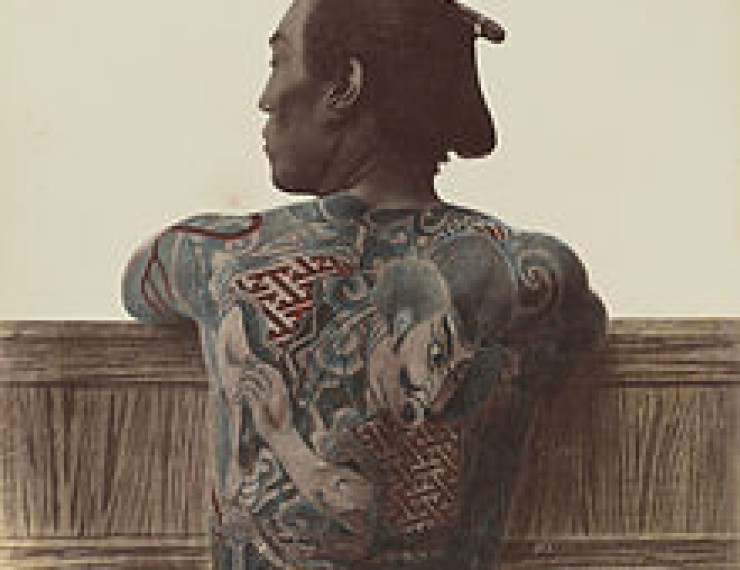Irezumi: My Experience in Getting a Traditional Japanese Wabori “Bamboo” Tattoo.
The art of tattooing is thought to date back to the Paleolithic period (10,000 BC). Like now, they were done for spiritual and decorative purposes. During the Edo period (1600-1868 AD) the style of the irezumi (traditional Japanese tattoo) grew significantly in Japan.
I, just like most westerners, have always been fascinated with tattoos. Naturally, the traditional Japanese wabori is the most beautiful style of art that I have ever seen. Yes, it is significantly more painful being used by a bamboo stick filled with needles. Yes, it will take twice as long as with a standard tattoo machine, and yes this style is only available on the other side of the world (for most of us). So why do it? Call me crazy, but it is for or all those reasons above.
After a ton of research I discovered a master artist located in Osaka Japan. The 60-year-old, Sensei Hori Hiro, is one of the few trained masters still practicing today (over 33 years of experience).
All his tools are handcrafted. The “bamboo sticks” as we foreigners call them, are carved from persimmon trees into a pencil like shape that is comforting to the hand of the user. Silk needles are then wrapped and firmly tied to the end of the wood. The needless are always replaced before the use of every new body/canvas.
The inks that he uses are completely natural. They come from a company called “Kobaien” that has been in production for over 400 years. This company produces the ink into small solid blocks known as “sumi”. The sumi is rubbed into a stone tablet, which in turn melts. This liquidated state drips into the stone tablet’s reservoir. The ink is then poured into a small container mixed with water.
The bamboo stick is used by dipping it into a small container filled with the melted ink. The attached needles have tiny gaps that hold the ink in place. He then uses one hand to hold the skin in place while his other hand holds the tip of the stick and braces it over top of his offhand for accuracy. He moves the stick in a quick poking motion to apply onto the skin.
Before meeting Sensei Hori Hiro I imagined walking into a dark smokey building filled with angry yakuza arguing over an illegal poker game. I would be approached by a scarred and intimidating artist who laughs as he sees this poor lost foreigner who was dumb enough to approach his lair….and before I know it I wake up the next morning in an alleyway with a huge scar where my liver used to be and a note that says “seek medical attention immediately.”
Yes the influence of westernized movies had me as ignorant as the next American. Luckily, it doesn’t go at all that way.
The first day I actually, found myself approaching a small and humble apartment in the Namba district of Osaka, Japan. It was filled with a conglomeration of his art and tools displayed in a very clean and organized fashion. I could tell he took pride and great care in the way his artwork was displayed. My first impression of Sensei Hori Hiro was that he is a man of normal height and build (for a Japanese man) with a very friendly and disarming smile. It was nothing like the scarred and scary yakuza that I have watched on television.
Ok, onto the experience of getting the tattoo . . . The first day was tough! Six and ½ freaking hours!!!! It consisted of free hand drawing followed by lining with the tattoo machine (he prefers to do the outline with the machine because there is nothing as accurate. For those of you that never had a tattoo, six and ½ hours under the gun will put anyone on edge. It didn’t help that despite valid advice my stubborn Texas mindset decided to go all out drinking with friends the night before. Needless to say, that night after my first tattoo session I was ready to die. I was definitely unsure if I could continue to handle this for another five days . . . Not to mention I was nervous as hell for the first session under the bamboo stick.
When I started the next day it was a huge relief that it was much easier to deal with instead of the gun. Does it hurt? Obviously, but it is manageable pain. With the bamboo stick it feels like someone is quickly poking you with a dull pen . . . literally, that soft. I was even falling asleep at some parts. This is as apposed to a tattooo machine, which feels like getting a “cat scratch sunburn.” And don’t forget that constant irritating vibration from the motor.
Don’t get me wrong. There were definitely excruciatingly painful parts to the tattoo, the inside of the elbow, the chest and the armpit. The inside of the elbow was so sensitive I swear I could feel every individual needle piercing the skin. I was definitely praying to the Buddhist and Shinto gods to help me get through it . . .
By the sixth day my entire arm and left pectoral felt like an open wound. It was as if someone stuck a couple of fishhooks into outer skin of my left pectoral and yanked them, ripping the skin off all the way down to my fingertips. I must have looked like an idiot walking the streets while one side of my body swayed in the wind and the other side was stiff as a board.
(It may not look like this but it sure as hell felt like it.)
This was definitely an amazing time. Watching this tattoo come to life was an incredible experience all on its own. The time spent getting this traditional style was a privilege.
For any of you curious about getting the style of a wabori tattoo the only advice I can give is “patience”. This took six days and over 33 hrs to get it 75% done (chest piece to a 3 ¼ sleeve). That’s right, I need at least 15 more hours in order to completely finish it. This will include adding color as well.
With that being said . . . To be continued.
– Luke Tunstall





















